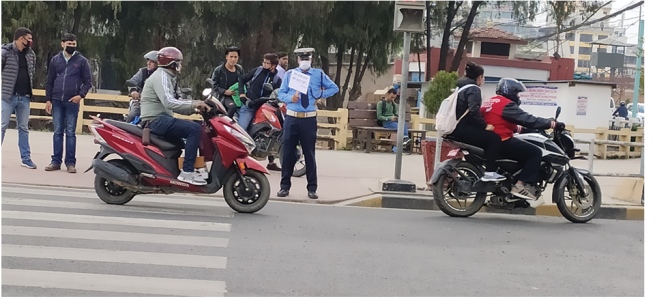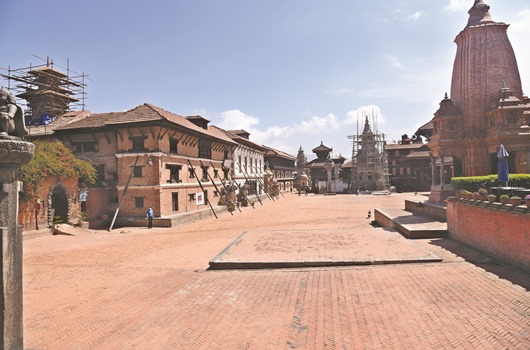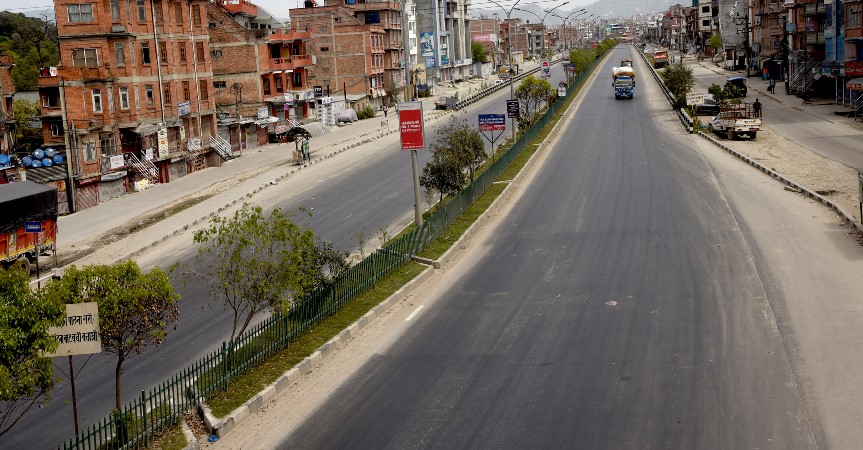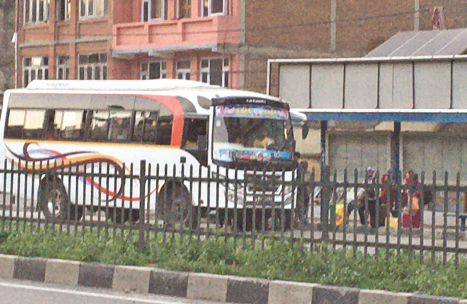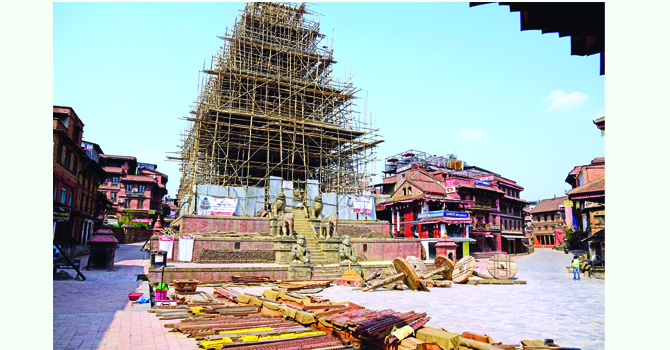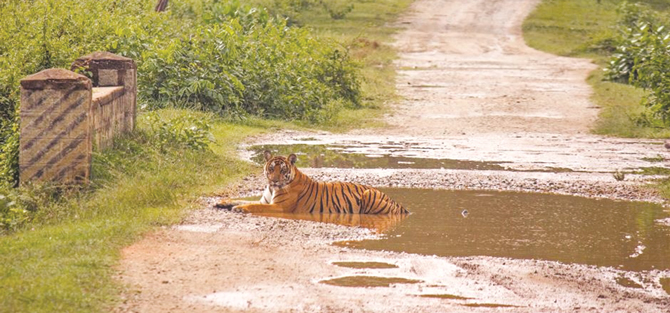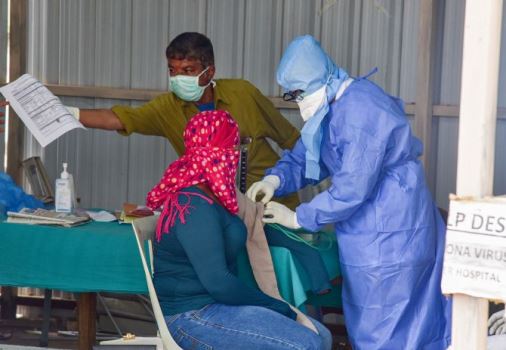Landslides continue to claim lives, damage property every year

By Indira Aryal
Kathmandu, June 21: As many as nine people died in the landslide of Saraunchaur, Parbat district on June 16, 2020. The tragedy that occurred in Durlung Municipality-3 is home for 45 households. This place does not fall in landslide risk zone in the official document, but the landslide occurred as a result of cloudburst during pre-monsoon days.
Last year, Nepal lost 83 people to landslides along with a loss of Rs. 400 million. A total of 1,132 infrastructures were destroyed and 743 livestock killed in 434 small and big landslides in 22 most prone districts.
Every year new areas are being identified as landslide-prone, increasing risk in settlements of different parts of the country. According to government records, landslides kill around 100 people and displace thousands of others.
With the onset of monsoon, the government ministers, international and national NGOs, private sector, individuals including the media start talking about the disasters but as soon as the monsoon subsides, the issue goes out of people’s mind.
Landslide kills the largest number of people unnaturally except epidemics and lightning. Experts say 80 per cent of landslides in Nepal are rainfall-induced disasters that take place during the monsoon period (nearly 100 days between June to September). The remaining 20 per cent are dry landslides.
Anil Pokhrel, Chief Executive at the National Disaster Risk Reduction and Management Authority (NDRRMA) under the Home Ministry, said that in the past nine years, 904 people died and 233 went missing in landslides. Several others sustain injuries. The loss of livestock and property is substantial, too.
Pokhrel said, “Compared to floods, which often have positive benefits such as an increase in agriculture productivity, flushing of waste and foul smell, landslides are more damaging. They tend to wipe out entire settlements.”
The mid-hills are hotspots for landslides. Eighty per cent of the landslides that take lives of ordinary people occur during the monsoon, Pokhrel said.
From this year, the government started to record the total number of dozers and keep them stand-by for the rescue process with the
coordination of every ministry and local bodies.
“For the early preparedness, the NDRRMA has prepared a map highlighting districts
prone to landslides. It is also working for the early warning system like early warning of floods. The NDRRMA, Department of Meteorology and Hydrology andDepartment of Mines and Geology have been working together to develop landslide forecast system from the current fiscal year,” Pokhrel said.
“Due to the steep topography and the age of our mountains along with the increasing pattern of heavy rainfall, landslide hazard has increased. There is growing pressure to build additional houses every year. Both small and large scale construction activities, including roads, irrigation systems, and tunnels designed and constructed without considering landslide risks aggravate the situation,” he said.
The risk of landslides has been assessed to be higher in the hilly districts. According to various scientific risk assessments, 22 districts, namely Bajura, Kalikot, Jajarkot, Dolpa, Rolpa, Paschim Rukum, Myagdi, Pyuthan, Baglung, Kaski, Gulmi, Syangja, Palpa, Kaski, Gorkha, Dhading, Nuwakot, Rasuwa, Sindhupalchwok, Makawanpur, Dolakha and Sankhuwasaba, have been identified as highly prone to landslides.
Rampant construction of dozer-dug roads without proper engineering and risk considerations has exacerbated landslides in the recent years. Construction of roads without a properly designed drainage system worsened the situation further, Pokhrel reported.
Apart from the loss of life and property, landslides have also affected various other dimensions of social life by blocking roads and highways.
In order to effectively plan and manage landslide risk, the National Disaster Risk Reduction and Management Authority has begun working jointly with relevant government and non-government agencies in collecting information about risks of landslide.
According to Madhukar Upadhya, climate change and watershed management expert, with increasing unmanaged settlements, people have been facing landslides every year. There should be tracking and forecast systems like weather to control human loss from landslides.
With growing construction of roads in the name of development without proper drainage the number of big and small landslides is increasing. Due to the effects of climate change, rainfall has been causing huge losses in some parts of the country, Upadhya said.
He said that people tended to forget the water-induced disaster in the dry season and carry out development works without thinking twice about the run-off and drainage management that has been causing more landslides. “The problem recurs every year,” he added.
The pattern of rainfall has been changing in the past few years due to the effects of climate change. It is suspected that the water-induced disasters might increase significantly in the days ahead, according to Upadhyay. Water causes more damage downstream. The water-induced hazards will multiply as the water mass flows downwards, he said.
“Most of the hilly areas are shaken by the Gorkha earthquake in 2015 and the risk might be high in those areas if the volume of rainfall is high. “We have to deal with the nature, construction of roads in whatever way we like is not development work, there should also be proper management of the waterway to minimise the risk of water-induced problems,” he said,
Both Pokhrel and Upadhyay emphasized on early warning systems in most areas prone to landslides.
Recent News

Do not make expressions casting dout on election: EC
14 Apr, 2022
CM Bhatta says may New Year 2079 BS inspire positive thinking
14 Apr, 2022
Three new cases, 44 recoveries in 24 hours
14 Apr, 2022
689 climbers of 84 teams so far acquire permits for climbing various peaks this spring season
14 Apr, 2022
How the rising cost of living crisis is impacting Nepal
14 Apr, 2022
US military confirms an interstellar meteor collided with Earth
14 Apr, 2022
Valneva Covid vaccine approved for use in UK
14 Apr, 2022
Chair Prachanda highlights need of unity among Maoist, Communist forces
14 Apr, 2022
Ranbir Kapoor and Alia Bhatt: Bollywood toasts star couple on wedding
14 Apr, 2022
President Bhandari confers decorations (Photo Feature)
14 Apr, 2022



